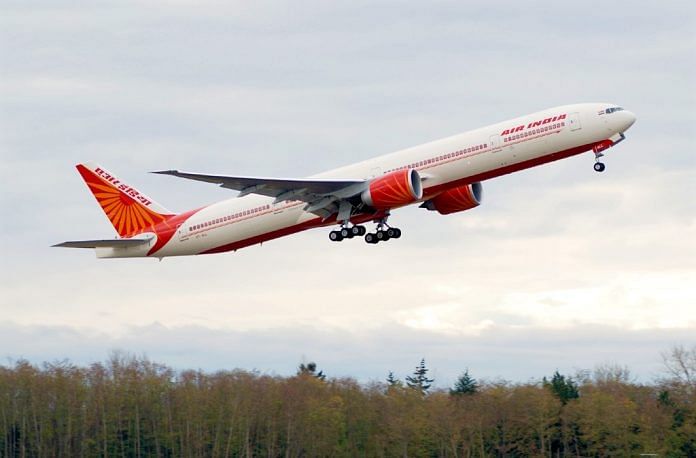The government is looking to turn Air India into a widely held public limited enterprise run by an independent corporate board.
New Delhi: Days after Air India’s failed disinvestment bid, the government is contemplating a complete overhaul of the national carrier into a publicly traded company run by an independent corporate board, in which the government would keep only a tiny share.
In an interview with ThePrint, Niti Aayog vice chairman Rajiv Kumar said the failed bid has given the government time to relook available options with respect to the airline’s disinvestment.
In what could be a significant change in the method of disinvestment, Air India could move away from the strategic disinvestment envisioned in the first bid where 76 per cent of the equity shareholding would have gone to a private player.
“It gives a chance to think once again whether we want to do something like what Lufthansa has done. Which is to have a very widely held public limited enterprise,” Kumar said.
In the mid-90s, the German government reduced its stake in the national carrier from over 51 per cent to 35 per cent. Several separately operated units were turned into individual group companies. And by 1997, the carrier was finally privatised.
While it is only an idea under consideration at the moment, if materialised, the shares of Air India will be publicly traded. The government will only have a minority stake in the airline which will be run by an independent corporate board.
“We can put in place a professionally managed running board which is very arm’s length from the government and run the Air India like that (sic),” said Kumar. “It has assets which are quite prized so there is no reason for us to not be able to let it work, to get value out of it. And to assume that we can’t find a board like that or a competent management like that is really not right.”
Earlier this year, the Narendra Modi government planned to sell 76% stake in the failing Air India as a reform move. But despite initial interest from airlines, including Jet Airways and Indigo, the national carrier didn’t receive a single bid till the 31 May deadline.
The doomed bid
Kumar said that he wasn’t disappointed with the recent Air India situation since he had already ‘guessed’ the fate of the bid based on how it was structured. According to Kumar, the fact that the government would hold 24 per cent of the equity shareholding proved to be a bottleneck in inviting bidders.
“Further, it was unclear what would happen to the employees of the airline,” he added.
The buyer was reportedly expected to take on about 27,000 of Air India’s employees, 40 per cent of whom are permanent.
Apart from fears over the managerial control the government would have given its 24 per cent stake, airlines were also apprehensive to take on about Rs 33,000 crore of debt as a part of the deal.
What the failure means for government
Kumar said while the failed bid is a ‘setback’, the government is seriously pursuing the process and aims to fulfill its disinvestment target of Rs 80,000 crore in fiscal year 2019. He also said that while there has not been any strategic disinvestment up till now, divestment by diluting equity, as has been the case for most PSUs up till now, ‘still’ brought revenue to the government.
The Niti Aayog vice-chairman admitted to facing initial resistance from the respective ministries the PSUs report to, but they eventually fell in line because that was the “message from the top”.
“Niti does therefore sometimes reflect political wills,” he added.




Fundamentally its a good idea to have the LHT model which is based on having individual level shop unit as a seperate activity cum profit centre and an interface of technical/planning experts team and sales/marketing team and to have the agreements at that level to bring up each cenre of profit.
This is fundamentally a great idea create small individual work centres as profit centres involve the expert manpower and get into shop level jv — it can work miracles — first step down the line provide financial powers focus and bring up core dept guys — read ENGG– engineers , tech officers etc , ops and commercial and than run show
Air India has lost close to forty thousand crores in the last four years – including the current one – when oil prices were largely benign. Instead of semantics, “ independent board “ – look no further than ONGC to appreciate how PSUs are run – the first thing that should be done is to draw a line in the sand. No more financial support, beginning with the immediate requirement of 1,000 crores. Start the process of winding up a terminally ill commercial venture that the market has little use for.